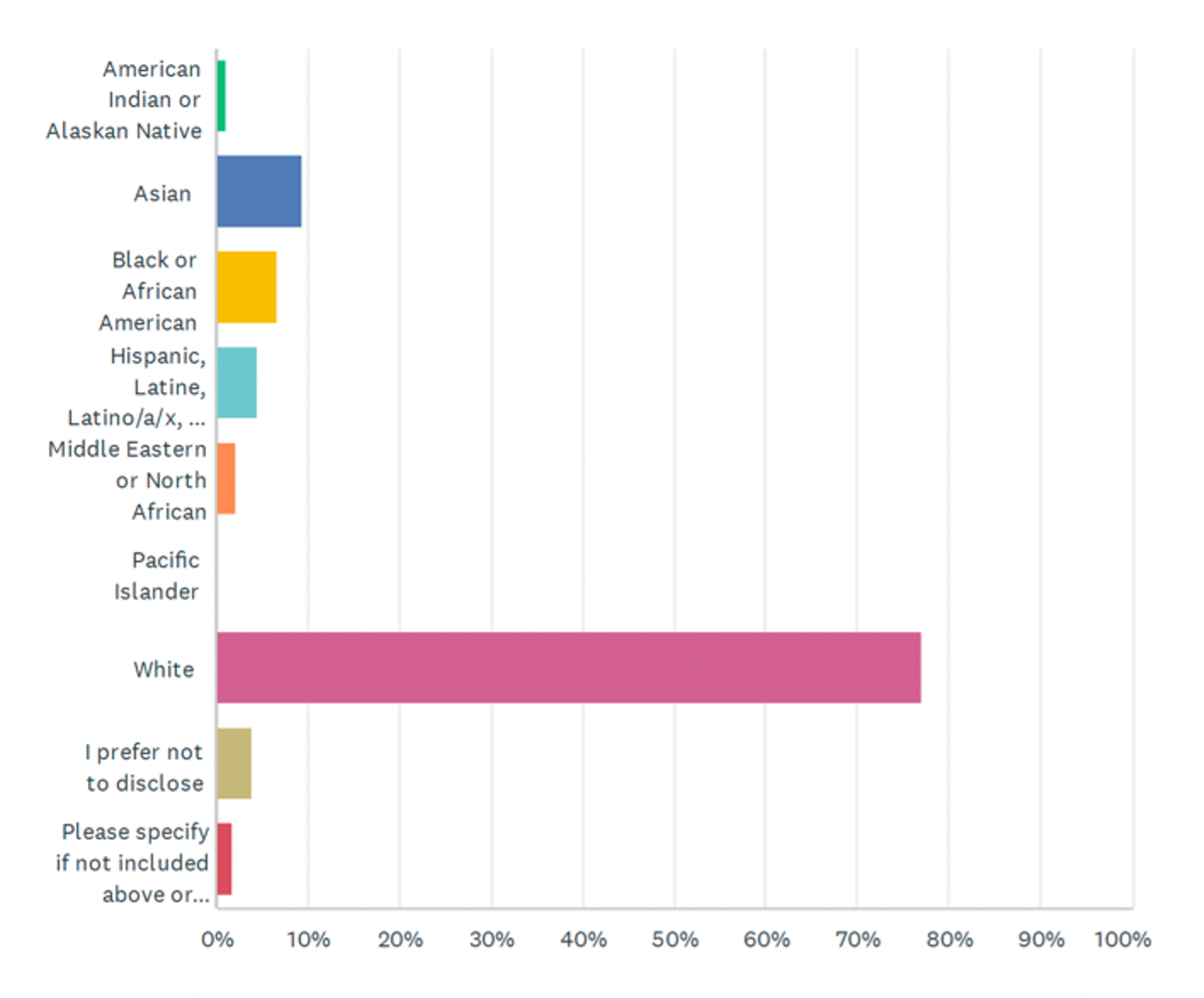Thank you to those of you who review manuscript submissions for Family Medicine! We recognize this is uncompensated labor, and you spend hours of your limited time helping advance the science of family medicine education. Your efforts make this a better journal, as do your identities, training, and experience, both personal and professional. The Family Medicine editorial team is also grateful to the reviewers who completed the journal’s recently-concluded reviewer demographic survey. We made the survey as short as possible but also want to recognize our reviewers’ participation.
When we sent the survey, we communicated that we would share the results with stakeholders. The journal's readers are stakeholders, and we are reporting the survey results to you based on the anonymized data set we have collected.
Our survey of all reviewers who completed at least one review for Family Medicine resulted in a respondent pool of that was primarily women (55%) and predominantly White (77%, Figure 1). Professionals who have been out of training (eg, residency, fellowship, post-doctoral training, or terminal degree program) for 10 years or more represented 45% of our reviewers in 2023. Still, an equal percentage (46.7%) were 0-10 years out of training. As far as reviewers’ nation of origin, respondents gave 150 different responses. While there were plenty of redundancy, we are pleased to announce there are reviewers from every continent except for Antarctica in this group. Overall, the survey has been a success.
Despite the geographic diversity of our reviewers, however, we noticed some groups with few respondents, and many groups are less represented in our sample when compared to the general population and the family medicine academic workforce. 1, 2 We invite those underrepresented in the primary care education community to engage with the journal as reviewers and authors, since peer review is so central to our journal and our discipline. 3 If you can mentor an underrepresented author, please encourage them to share their work with the journal. Better yet, coauthor with them to bring the work here.
Although our survey was of reviewers, we suspect the racial/ethnic and gender identities of authors are similar to those of our reviewers. There are opportunities both for diversity and to include scholars who newer in their careers to review. You may not think you can review a paper, but we can help show you how. Fellowships are available through STFM, particularly the Leadership through Scholarship Fellowship, 4 and the Family Physicians Inquiries Network, 5 that teach reviewing skills. Table 1 gives additional resources for those who wanting to learn to review.
Lastly, we apologize to our reviewers for a question on the survey that left out valued members of our community. We know better, and in the future, our questions will not exclude those members of the family of family medicine who are not physicians. We recognize the hurt that we have caused and sincerely apologize.
We are delighted that many readers think of our journal first and submit to us early in their careers. We invite you to continue to send manuscripts as you progress in your career, as good science in our journal will take our specialty to new heights and can increase the impact and prestige of STFM and Family Medicine.




There are no comments for this article.